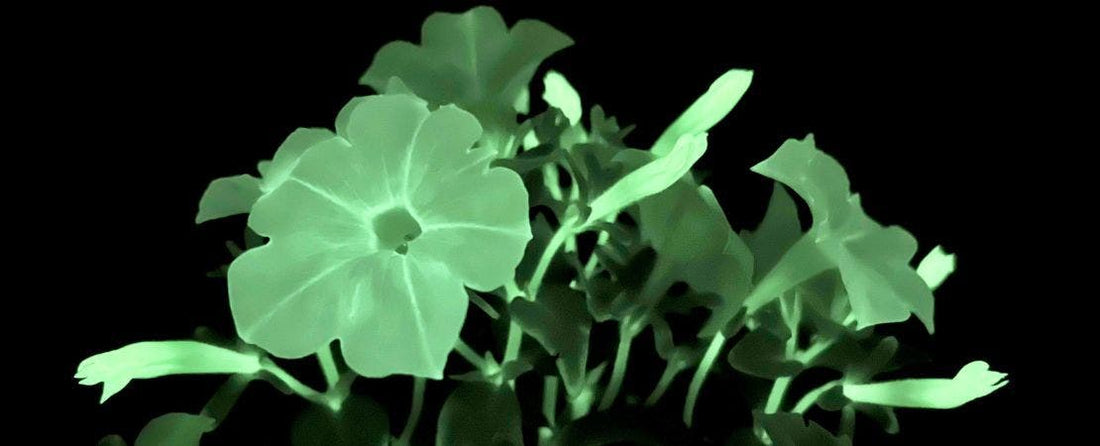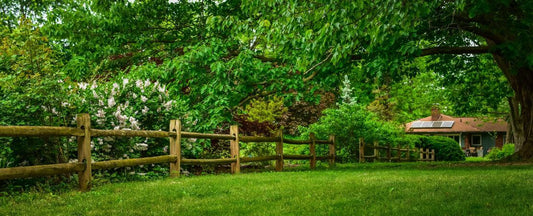How to Care for Firefly Petunias

A Guide to Pampering These Exciting, One-of-a-Kind, Glow-in-the-Dark Blooms
Firefly Petunias are more than your typical flowering plant. By day, they display a soft, classic petunia look with white blossoms, but by night, they come alive with a captivating glow that sets them apart. This innovative plant, brought to life by Light Bio through advanced biotechnology, brings a luminous spectacle to any garden or indoor space. But to keep these enchanting blooms glowing, Firefly Petunias require a bit more care and attention than standard petunias. Here’s an in-depth look at how to care for Firefly Petunias and ensure their unique brilliance shines night after night.
Light and Placement: How to Make Firefly Petunias Glow
Outdoor Growth
Sunlight Requirements: For optimal growth and brightness, Firefly Petunias need 6-8 hours of direct sunlight. Sun exposure during the day allows the plant to "charge up," storing energy that will later translate into its bioluminescent glow.
Placement: Choose a sunny spot in your garden or patio that’s shielded from strong winds and where the petunia can soak in daily sun.
Indoor Growth
LED Grow Lights: If you’re growing Firefly Petunias indoors, supplement natural light with LED grow lights to mimic sunlight. Choose grow lights within the 400-2,000 umol/m2/s spectrum to encourage vibrant, healthy growth.
Avoid Temperature Extremes: Do not place Firefly Petunias near heat sources or drafty windows, as these temperature fluctuations can impact both their growth and luminescence. Stable temperatures will support both foliage health and bloom production.
Soil and Watering: The Foundation of a Healthy Firefly Petunia
Soil Requirements
Well-Draining Soil: Firefly Petunias thrive in well-draining soil rich in organic matter. This soil type ensures roots don’t become waterlogged, which can lead to root rot and hinder bloom production.
Soil pH: Aim for a slightly acidic to neutral pH level (5.5-6.0) to create an environment where the plant can access nutrients effectively.
Watering Needs
Consistent, Moderate Moisture: Water the plant when the top inch of soil feels dry to the touch, avoiding bone-dry or waterlogged conditions. This balanced approach helps prevent stress that might impact its bioluminescent glow.
Moisture Management for Indoor Plants: For indoor petunias, alternate between moisture levels—allowing the soil to dry slightly between waterings but keeping it consistently hydrated enough for active growth and luminescence.
Fertilizing Firefly Petunias: Fueling Glow and Growth
Firefly Petunias are energy-intensive, meaning they require consistent nutrients to support both blooming and glowing. Here’s how to keep their nutrient levels balanced:
Initial Fertilizing: At planting, apply a balanced, flowering plant fertilizer, like Algo Plus Flowering Plants Fertilizer, to kick-start growth. This initial boost supports both root establishment and bloom production.
Ongoing Fertilization: Use a continuous liquid feed, petunia feed, or a similar product with a high nitrogen level, at a rate of 250 ppm. Regular feeding with these specific ratios encourages vibrant, lush foliage and more frequent blooms.
Temperature and Humidity: Ideal Conditions for Firefly Petunias
Temperature Range
Optimal Growing Temperature: Firefly Petunias flourish in temperatures between 65-75°F. While they can handle occasional warm spells, prolonged exposure to temperatures above 90°F can stress the plant, leading to reduced luminescence.
Cold Sensitivity: Since Firefly Petunias are sensitive to frost, bring them indoors or provide shelter during colder weather. Freezing temperatures can damage both the blooms and foliage, impacting their nighttime glow.
Humidity Considerations
Firefly Petunias are not particularly sensitive to humidity but do best in moderate humidity levels, avoiding overly dry or excessively moist air to maintain healthy leaves and flowers.
Pruning and Pinching: Encouraging Healthy Growth and Re-Blooming
Pinching
Promotes Compact Growth: As Firefly Petunias grow, they may benefit from pinching, a process of removing the tips of stems to encourage bushier, compact growth. This technique helps the plant maintain a tidy shape and can increase bloom production.
Timing: Pinch the plants about halfway through the finishing cycle or when they seem to be growing too leggy. Firefly Petunias respond quickly to pinching, producing fresh buds and foliage shortly after.
Pest and Disease Management for Firefly Petunias
Common Pests
Thrips: Thrips can be problematic for Firefly Petunias. These small pests damage foliage and, if not controlled, can impact the plant’s health. Use an organic insecticide or a biological control method to manage thrip populations effectively.
Bringing Firefly Petunias Indoors for Winter
To enjoy Firefly Petunias year-round, consider overwintering them indoors. Move them to a well-lit indoor space when temperatures drop below 60°F. Place them under grow lights if natural sunlight is limited during the winter months. With proper care, they can continue to bloom and glow indoors, adding beauty and intrigue to your home throughout the colder months. While petunias are classified as tender perennials, most gardeners plant new ones each spring.
Firefly Petunias are truly one of a kind, creating a luminous display that sparks joy and wonder in everyone who sees them.




